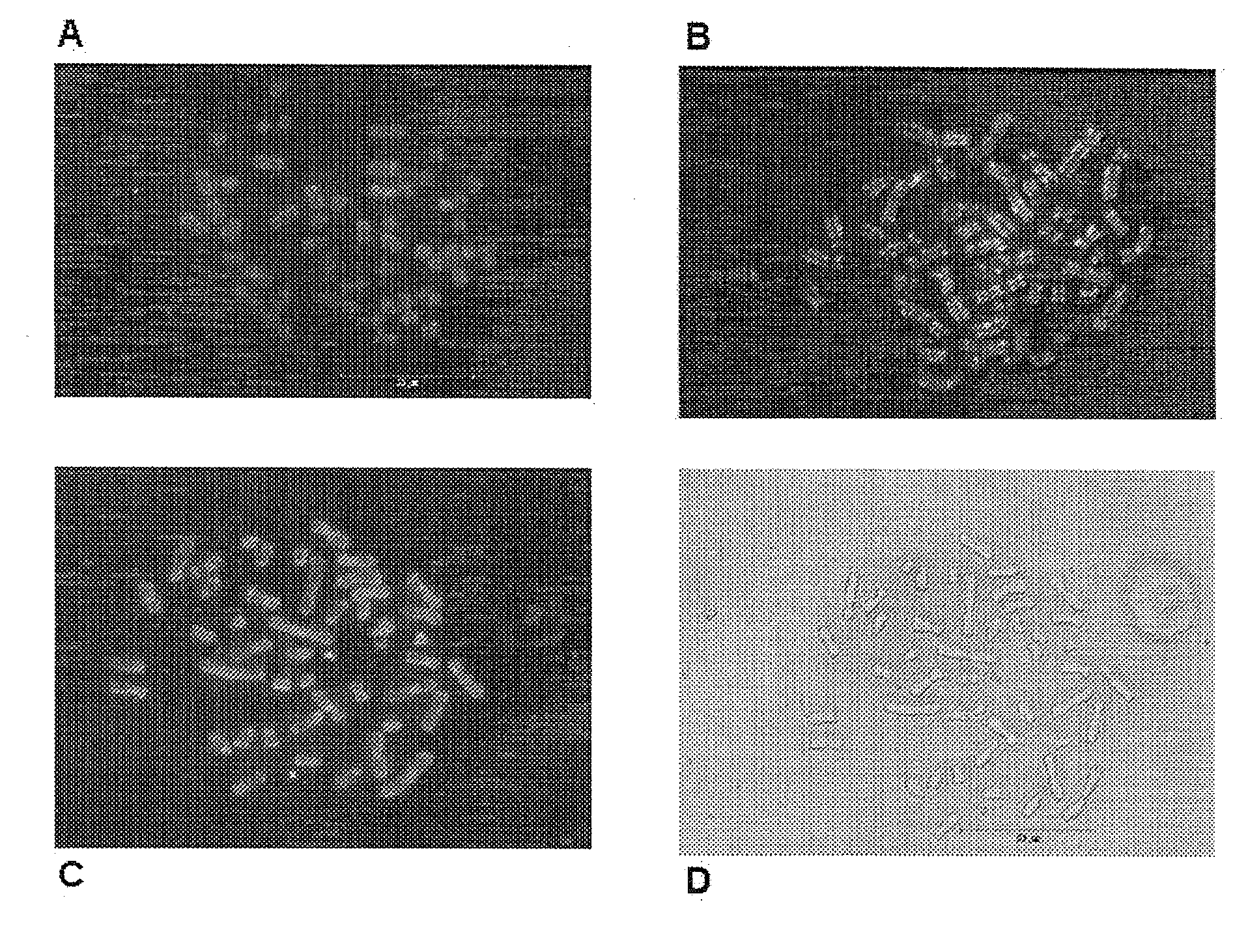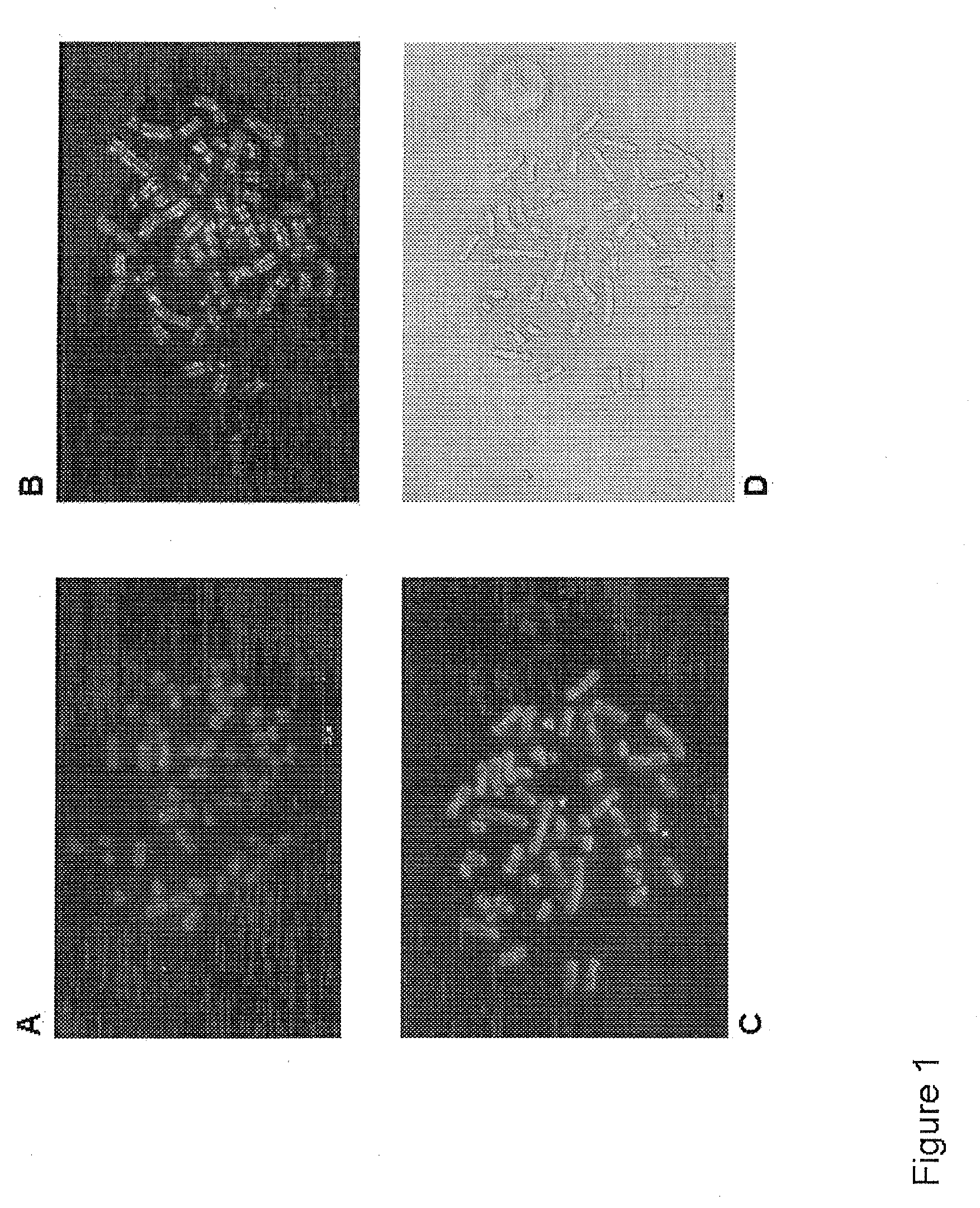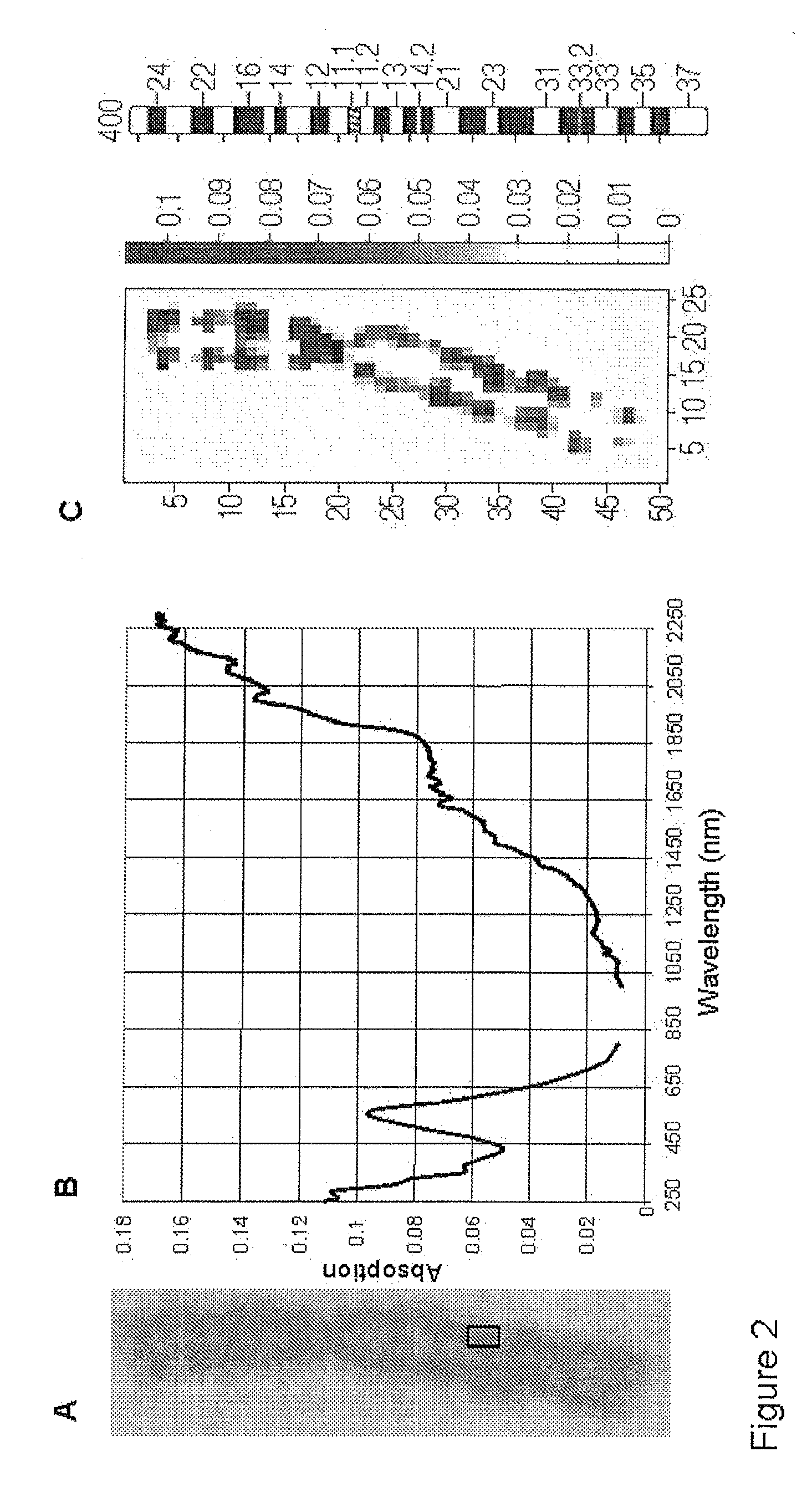Marker-free chromosome screening
a chromosome and marker-free technology, applied in the field of chromosome analysis, can solve the problems of high disturbance resistance, time-consuming execution and analysis of methods, and high difficulty in detecting disturbances
- Summary
- Abstract
- Description
- Claims
- Application Information
AI Technical Summary
Problems solved by technology
Method used
Image
Examples
examples
1. Preparation of the Metaphase Chromosomes
Blood lymphocytes taken from men and women whose karyotype had previously been shown to be normal 46, XX or XY were used for the manufacture of chromosome preparations. The sample of the blood culture, as well as the preparation of the blood culture, was carried out in accordance with the standardized methods and protocols of human cytogenetics.
2. Sample of Blood Culture
Venous blood was transferred to a small sterile tube wetted with heparin. The full blood was transferred under sterile conditions into culture flasks and mixed with chromosome medium B (Biochrom AG, Catalogue No. F5023). The T-lymphocytes were stimulated during a cultivation time of 72 hours at 37° C. in an incubator to undergo cell division.
3. Processing of the Blood Culture
Colcemid was added to the blood culture, incubated at 37° C. for 30 minutes and then centrifuged for 6-7 minutes. The supernatant was removed by suction down to the lower cone. The sediment was then shak...
PUM
 Login to View More
Login to View More Abstract
Description
Claims
Application Information
 Login to View More
Login to View More - R&D
- Intellectual Property
- Life Sciences
- Materials
- Tech Scout
- Unparalleled Data Quality
- Higher Quality Content
- 60% Fewer Hallucinations
Browse by: Latest US Patents, China's latest patents, Technical Efficacy Thesaurus, Application Domain, Technology Topic, Popular Technical Reports.
© 2025 PatSnap. All rights reserved.Legal|Privacy policy|Modern Slavery Act Transparency Statement|Sitemap|About US| Contact US: help@patsnap.com



